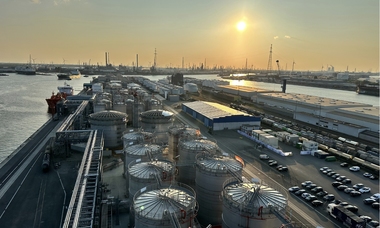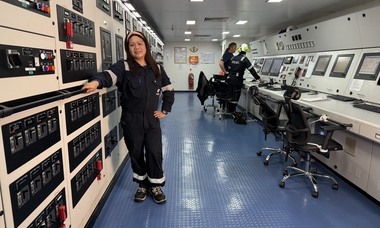Below is an excerpt from an article published in ShippingWatch on January 31, 2022.
Written by Tomas Kristiansen.
Not long ago, the shipping industry held the stance that the European Union should refrain from legislation on how the international sector could pollute less and emit less CO2 into the air.
It’s noteworthy, therefore, that one of Europe’s prominent maritime chief executives is now looking forward to the EU’s carbon quotas becoming reality, which in the best-case scenario could happen as of January 1, 2023.
By that time, the entire maritime sector could be included in the union’s cap-and-trade system, meaning that shipping industry players must purchase quotas in order to be able to sail a specific distance. That is, the owner of a ship must ensure that quotas have been acquired at the going rate of the time, and that the customer then pays the expense as part of their bill.
For, as reasoned by Odfjell Chief Executive Officer Kristian Mørch, customers won’t become conscious of the difference beween hiring an old, polluting vessel and a new eco ship and start choosing the latter until there is a concrete price on carbon emissions.

”Today, there is no financial consequence if a customer chooses an efficient, less polluting ship: Many customers have had ESG principles for years, but I don’t think there will be a serious change in their choice of carrier or operator until they see a price making it more expensive to choose an inefficient vessel”
For example, he holds that Bergen-based Odfjell has still reaped no gains from having invested in new ships and, according to Danske Bank and others, having a fleet with relatively low carbon emissions. Odfjell also recently received an acknowledgment from rating firm Ecovadis for its work toward green shipping.
”We have a fleet that’s 20-30 percent more efficient than the industry at large, and we have customers with ambitions to see net-zero emissions. But we still have yet to see it in action. There are still no examples that we will have preference due to the fact that our fleet is more efficient. That’s why I think putting a price on CO emissions is the right thing to do” .
All eyes on 2030 and 2050
One of the reasons for the process dragging out, according to the CEO, could be that there is a lot of focus on the future years of 2030 and 2050, meaning how shipping can meet the requirements in the longer term. But it’s already possible to do a lot right now, and looking at how hard it is for the International Maritime Organization (IMO) to agree on an ambitious deal, it might prove necessary to take action today, he points out.
Bond linked to sustainability
Odfjell was one of the first major shipping lines to lend money via a bond linked to sustainability, and management’s bonus is dependent on whether the green goals are achieved. The carrier’s climate target entails halving its carbon intensity by 2030 compared to 2008. And Odfjell plans to be entirely climate neutral by 2050, which is more ambitious than the IMO’s current goal.
According to its own numbers, Odfjell has already cut 30 percent of its carbon intensity since 2008, and vessels in its fleet emit 35 percent less CO than the segment average based on the Energy Efficiency Operational Indicator (EEOI). This index measures carbon emissions per freighted unit per nautical mile and thus takes into account whether a ship is loaded or not.


